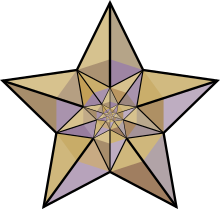Evaluating Wikipedia article quality (Bookshelf)/2013 edition
This is the second edition of the Evaluating Wikipedia article quality brochure (now titled Evaluating Wikipedia: Tracing the evolution and evaluating the quality of articles), from late 2013. The text underwent minor revision from the 2011 first edition, and the design was updated to match the other recent Wikimedia outreach brochures.
Text with special formatting (generally used to designate interface elements or Wikipedia-specific terminology) are marked in bold.
text
[edit]page 1 (cover)
[edit]Evaluating Wikipedia
Tracing the evolution and evaluating the quality of articles
wikipedia.org

page 2
[edit]Wikipedia is the biggest encyclopedia ever created.
It exists in hundreds of languages. Unlike a traditional encyclopedia, however, Wikipedia uses an open editing model. Anyone may contribute by writing or editing articles directly, which means articles can vary in quality. It is important for readers like you to recognize whether an article is good or poor.

What is Wikipedia?
Wikipedia is not a primary source, like a direct interview, or a secondary source, like an academic paper or a news story. Wikipedia is an encyclopedia. It is a collection of information from primary and secondary sources, assembled into articles that provide a general overview. Like other encyclopedias, Wikipedia should be used as a starting point. It can provide a broad overview of a subject and help you find high-quality primary and secondary sources.
Wikipedia can help you to:
Get an overview of a subject
Get a list of recommended works about a subject
Discover related topics
How are Wikipedia articles created?
A typical Wikipedia article is not created all at once. Articles grow, edit by edit, often by many different authors in collaboration. One contributor may start the article, another may add more text, and yet another may reorganize it to make it easier to read. No one person “owns” the article, but many people care deeply about articles in which they have invested lots of time.
page 3
[edit]Observing the evolution of a Wikipedia article
You can look at how each article evolved by clicking the View history link at the top. Every previous version of the article can be found there.

On the View history page, each row represents one version of the article. Click on the date to see that version. You can see that each version is associated with the user who made that edit.

Compare with current or previous version
Time and date of edit
Username or IP address of contributor
Editorial comment
You can also compare two versions of the article by choosing the radio buttons that correspond to the versions you want to compare and clicking Compare selected revisions. You will see two columns: The left is the earlier version and the right is the more recent. Any differences are highlighted. You can use this feature to determine what has happened – what information was added or removed in the time between the two versions.

Previous version
New version
page 4
[edit]How contributors improve Wikipedia
Most people think of Wikipedia as only encyclopedia articles, but a great deal of work takes place behind the scenes, as well: about half of the edits made to Wikipedia are made to pages other than the articles. Contributors discuss how articles should evolve, evaluate the quality of sources, and set out editorial policies. These pages and discussions are open for public scrutiny, just like the articles themselves, if you know where to look.

Each article has its own Talk page. At the top of each article is a tab labeled Talk. Click on it and you will see how much deliberation has gone into creating the article. Maybe some aspect that you are wondering about has already been discussed. If you have doubts about the quality of an article and cannot improve it yourself, write your questions on the talk page.

Many questions are answered within a few days, but if your questions have not received any attention in one week, it may be a good idea to ask the article’s contributors directly, or seek a more general discussion forum. Click on View history and find a user who has made several edits to the article and click on the link that leads to his or her personal talk page. You can ask questions of the individual contributor on that page.
Evaluating article quality


Distinctive icons to celebrate good and featured articles
The quality of Wikipedia articles varies widely; many are very good, but some lack depth and clarity, or contain bias, or are out of date. On the English language Wikipedia, there are formal processes for the best articles to be identified as “good articles” or “featured articles,” but the vast majority of articles on the site – even though some of them are quite good – have not attained these designations.
So, how can you quickly assess the general quality of an article? There are two main ways:
Check for elements of quality articles
Look for common signs of bad quality
page 5
[edit]Elements of quality articles
In general, high-quality articles have five elements:
a lead section that gives an easy-to-understand overview,
a clear structure,
balanced coverage,
neutral content, and
reliable sources.
The lead section is understandable and summarizes the article’s key points. The lead in a biography should, for instance, mention why the person is known and where she lived, but need not cover details about her childhood that may be more appropriate to a subsequent section.
The structure is clear. There are several headings and subheadings, images and diagrams at appropriate places, and appendices and footnotes at the end. For most articles, the content is chronological or arranged by theme.
The various aspects of the topic are balanced well. No aspect takes over the article, and all significant aspects are covered. More important viewpoints receive more space in the article. For example, an article about a cat breed that contains a long description of the breed’s temperament, but little or no information about its physical characteristics, is not well balanced.
Coverage is neutral. Articles must be written without bias; where there is disagreement among scholars of the subject, the different views should be covered with appropriate balance. Both positive and negative elements should be included, in proportion to their coverage in reliable sources. Good articles also use neutral language and emphasize facts. Articles should not read like persuasive essays, but instead like encyclopedia articles.
References to reliable sources are important. Good articles have plenty of footnotes at the bottom. If you see numerous links to authoritative publications, that’s a good sign that you’re reading a high-quality article. The article about the Moon should have links to NASA’s website, but not to an amateur astronomer’s blog.
page 6
[edit]Signs of bad quality
The article has a warning banner at the top. Most warning banners are only information or requests, such as asking you to help expand the article if it is very short. But warning banners can also represent an unresolved dispute about the article’s neutrality or the quality of its sources.
Several language problems are in the lead section of the article. Problems in the lead usually indicate problems with the whole article. A very short lead section may indicate an article that has grown up piece-by-piece, without much attention to the overall work.
The language contains unsourced opinions and value statements, which are not neutral and should be removed. For example, instead of saying: “She was the best singer,” the text should say: “She had 14 number one hits, more than any other singer.”
The article refers to “some,” “many,” or other unnamed groups of people. These statements are too general and should be replaced with facts.
There seem to be aspects of the topic that are missing from the table of contents and the article. For instance, a biography that skips an entire period of its subject’s life may be missing important facts.
Some sections seem overly long in proportion to their importance. For example, a big “criticism” section in an otherwise short article about a company suggests that the article is biased against the company.
The article has very few references, or substantial parts of the article lack footnotes. If an article is based on too few sources, it may have been written without complete information about the subject.
The Talk page is filled with hostile dialogue. If the editors working on the article are not finding common ground, the article may be heavily biased in one direction, or may reflect too much detail about the controversial aspect of its subject without sufficient attention to less controversial aspects.
page 7
[edit]What to do with articles of poor quality
If you have the time or the knowledge, please consider correcting the problems yourself by clicking Edit at the top of the article.
1) Check if the problem is temporary, such as somebody trying to remove a section that is unflattering about their hero. Click View history and look through the last few edits.
2) If the problem lies in the last edits you can click undo and instantly repair the damage. If the problem has been around for a longer period or if you do not possess the knowledge to fix it, leave a comment on the Talk page, describing the problem.
3) If the problem is serious, such as libelous statements against a living person, feel free to cut out the problematic parts. Be thoughtful about your own biases, though, especially if you are working on an article about yourself, your nation, or your organization. Critical sections in an article are often appropriate, especially when they are well sourced. You may want to explain your deletion on the article’s Talk page.
For more information about what you can do when you find a poorly written article, type Wikipedia:Writing better articles in the search box.
page 8 (back cover)
[edit]Can you trust the accuracy of Wikipedia?
Reliability is important.
For many, using Wikipedia has become more or less standard, but how can you make sure you get quality information?
“Evaluating Wikipedia: Tracing the evolution and evaluating the quality of articles” is a reference guide with specific steps you can take to get the most out of Wikipedia.
More materials:
http://bookshelf.wikimedia.org
All images from Wikimedia Commons are under a CC BY-SA license or public domain unless otherwise stated. The content contained within is available under the Creative Commons Attribution-ShareAlike License v.3.0 (http://en.wikipedia.org/wiki/Wikipedia:CC-BY-SA) or any later version.

The trademarks and logos of the Wikimedia Foundation and any other organization are not included under the terms of this Creative Commons license. Wikimedia Foundation, Wikipedia, Wikimedia Commons, MediaWiki, Wiktionary, Wikibooks, Wikidata, Wikisource, Wikinews, Wikiquote, Wikiversity, Wikivoyage, Wikispecies, and Meta-Wiki are pending trademark registration or are registered trademarks of Wikimedia Foundation.
For more information, please see our Trademark Policy page, http://wikimediafoundation.org/wiki/Trademark_Policy.
For other questions about our licensing terms or trademark policy, please email legal@wikimedia.org
